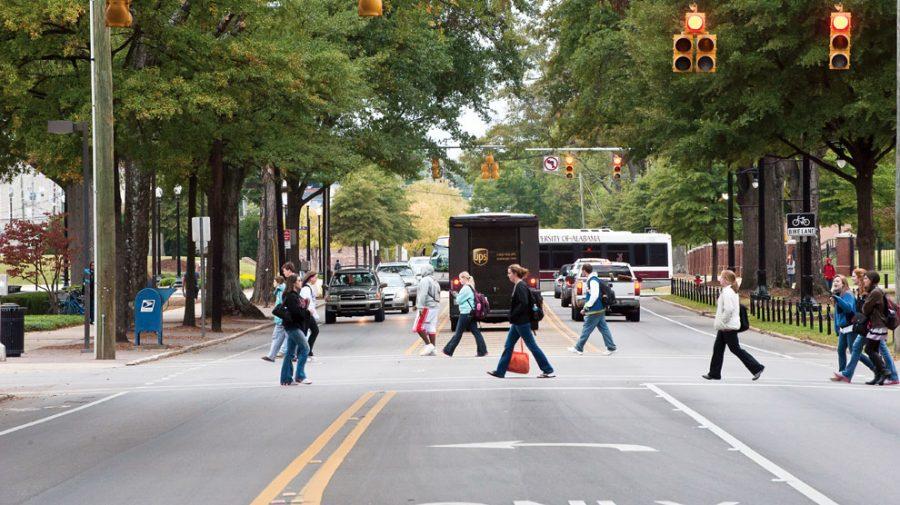Jessica Evers planned to spend her Thursday afternoon on Oct. 6 like any other typical college student: grocery shopping at Publix on The Strip, tanning and picking up some dinner from Moe’s.
However, when Evers stepped off the curb at Publix to walk to the shopping center across the street, a car attempting to make the turn light at the intersection struck her from behind.
“The traffic had stopped for me and I looked left, right and then started walking forward,” Evers said. “I should have checked left again because the car came from behind the traffic to cross the double yellow lines and enter the turning lane.”
Evers said she believes the car was going fast, but she remained conscious after the collision.
“I took a look at my leg for maybe a second and immediately realized that it was broken,” Evers said. “I screamed as loud as I could and soon people were surrounding me. A nurse happened to be close by along with the driver in the car that was letting me cross the straight moving traffic. I yelled for someone to call 911 and it was probably five minutes until an ambulance arrived.”
Evers’ leg was broken in two places, and she is expected to take several months to fully recover.
While she admits she was jaywalking, Evers said she believes The Strip is a dangerous spot for pedestrians.
“I do believe that pedestrian safety is a huge issue around The Strip,” Evers said. “There are no cross walks except at the light. It would be great if they could put one over by where I was walking and one across University.”
According to UA Media Relations, the University of Alabama Police Department has investigated 15 accidents in 2011 involving pedestrians.
“Serious injuries occurred in two of those accidents, including the [recent] accident near The Strip,” UA Spokesperson Cathy Andreen said. “Reports for the other accidents indicate that the pedestrian suffered injuries that were not considered serious or that the pedestrian had possible injuries but did not seek medical attention.”
Traffic accidents involving pedestrians might worry UA students, as most spend their days walking around campus. In recent years, the University has made major campus changes to accommodate the pedestrian student body.
In 2007, the University adapted its Campus Master Plan in hopes to create a more pedestrian-friendly environment.
“To minimize conflict between pedestrians and vehicles, the academic core of the campus is to be kept as vehicle-free?as possible,” stated the 2007 Pedestrian System Plan.
According to the document, the campus changed from an automobile-dominated campus to a pedestrian-accessible one by removing on street parking, installation of bicycle and transit lanes, and installation of a transit system – all of which are still implemented today at the core of the campus.
There are no current plans to add any additional pedestrian features to campus streets at this time.
However, UAPD offers traffic safety guidelines for drivers and pedestrians. The department hopes to better communicate these guidelines to students in the future.
“UAPD is currently developing a power-point presentation on Pedestrian Safety that will be used in programs given by officers in the Community Oriented Policing unit to those in their areas of responsibility,” Andreen said. “This presentation will help get the information out to a broader range of students.”
For drivers travelling on campus, UAPD advises caution in crowded areas, such as crosswalks at peak class times. Drivers are instructed to yield to pedestrians crossing intersections and to come to a complete stop if pedestrians are in the crosswalk.
UAPD cautions all pedestrians to obey any pedestrian signals and look left-right-left before crossing any road. In addition, UAPD advises students to make eye contact with the driver before crossing in front of a stopped vehicle.
Finally, cross only at marked crosswalks – you can be held responsible for an accident if you cross elsewhere.









